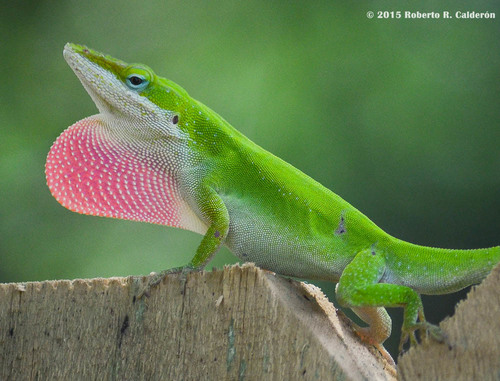
Green Anole
The green anole (Anolis carolinensis) graces the southeastern U.S. with its bright green hue and color-changing prowess. This arboreal lizard, known for its distinctive male dewlap, thrives in trees, playing a vital role in pest control and maintaining ecological balance in its habitat.
4 years
Lifespan
2.0 - 6.0 g
Weight
Length: 4 - 8 cm
Size
Brown, Green, Dark
Color
8-9 months
Age of Sexual Maturity
6 mph
Top Speed
Least Concern
Conservation Status
Stable
Population Trend
Distribution Range of the Green Anole
Anolis carolinensis, commonly known as the green anole, is native to the southeastern United States. Its geographical distribution extends from southern Virginia to the Florida Keys, and westward to central Texas and southern Oklahoma. Additionally, it has been introduced to other areas such as Hawaii and the Ogasawara Islands of Japan.
Green Anole's Habitat
Environmental Conditions
The green anole primarily inhabits warm, humid environments such as subtropical and tropical forests. It is commonly found in areas with abundant vegetation, including forests, woodlands, shrublands, and urban gardens. Within these habitats, the anole prefers areas with ample foliage for cover and open spaces to bask in the sun.
Ecological Niche
Anolis carolinensis occupies an arboreal niche, spending most of its time in trees and shrubs. It is an insectivorous species, feeding on a variety of invertebrates, which it actively hunts among foliage. The species exhibits a high level of adaptability to human-altered environments, often found basking on fences, buildings, and other structures. This arboreal setting provides shelter, food, and mating sites, optimizing its chance of survival and reproduction.
Copyright @ Nature Style Limited. All Rights Reserved.
 English
English